Dogs are known to be agile and explorative by nature. They love indulging themselves in any form of activity that you may love.

Be it playing a sport, watching television or even swimming. It is not only a great way to beat the scorching heat but also to spend some quality time with your lovely pooch.
Talking of swimming, do dogs really know how to swim? And which are the dog breeds that you could consider making your swimming companion? Let’s find out the dog breeds that can’t swim.
Do Dogs Know How to Swim?
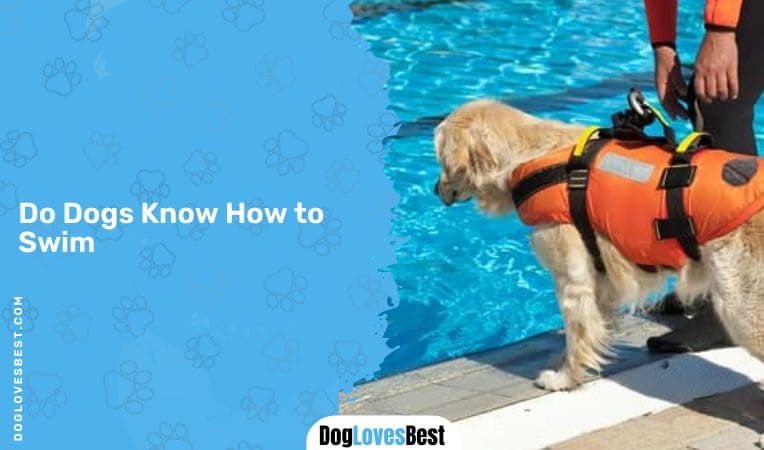
Although dogs are not natural swimmers, they can be trained to swim. That ways, you and your dog can spend quality time together. Swimming is a great form of exercise.
It tones muscles, increases stamina and keeps your doggy cool while it also helps them beat the heat. Dogs know how to paddle. You must have often seen your pet jumping onto water puddles or running across small water bodies or splashing water from their bowls.
Shallow water bodies don’t make them an expert at swimming nor does it imply that they love being around water and can manage swimming.
One should remember that not every dog is the same. There are different breeds, each of which has a particular characteristic. They have different body types and shapes that may or may or may not be conducive to swimming.
In the case of non-swimming dogs, the face and the body structure is such, it may not be feasible for your pet to keep their head above the water. This makes it difficult for them to breathe.
These features solely depend on the breed as each breed has a different structure and shape. Certain dog breeds like the Boxer, Pug, Bulldog, Basset Hound etc. generally can’t swim because of their shape and facial structure.
For dog breeds who may be smart enough to figure out a way to swim, they may have furry coats, disproportionately shaped heads, short and stubby legs or flat and short muzzles which may stop them from swimming or cause them difficulties in swimming.
For the breeds which may have disproportionately shaped faces or a flat face, they may find it difficult to keep their head afloat. Their nose and mouth fail to touch the water surface, and they may find it difficult to breathe.
Short legs mean an overall short height that does not let them reach above the water surface, irrespective of their shape or size.
Inspite of these challenges, if your dog is smart enough to figure out a way to swim in the water, he will manage to at all odds. Dogs have an instinctive ability to paddle when they come in contact with water.
If it’s a shallow water body, they can paddle and make their way out but it is not advisable to not take your dog to water bodies which are deep enough for their height. They might end up drowning if not supervised.
Certain dog breeds who hate the idea of staying in water pools or water bodies and prefer keeping themselves dry, end up finding a way through paddling themselves out. This is purely out of instincts and makes them no experts in swimming.
But then again, if your dog genuinely loves water and enjoys staying in the pool for quite some time, then you can upgrade your pet by simply training them how to swim. Remember that despite odds and shortcomings, we can train dogs to swim.
In this article, we help you list the most common breeds who may find it difficult to swim because of their general individual characteristics.
The 10 Dog Breeds That Can’t Swim
You have a dog? Great! You love swimming? Great! You may want to swim with your dog? Good idea! But does your dog’s breed swim at all? That’s what we help you find out with our list of 10 dog breeds that can’t swim.
1. Bulldog
This dog breed is nowhere close to being a swimmer. They have a short height with a wide face. Sounds disproportionate, but looks cute. They have a wide-body structure and a wide head, meaning they cannot paddle fast.
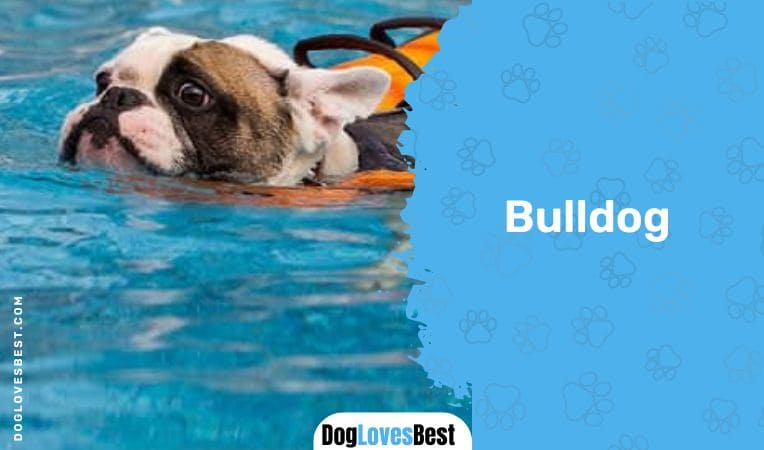
The broad width makes them feel heavy and stout. They can float in the water with a life vest. Rather, a life vest would make your dog look very adorable.
With multiple designs, colors, and features in a life vest, your bulldog can have a good swim time with you. But then again, a dog parent has to be extremely careful while their Bulldog is in the pool or water with them.
2. Chow Chow
Chow Chow is a hairy breed and has a dense coat. While swimming, this feature can be a major disadvantage.

Your Chow Chow would feel heavier because of the water accumulating on their coat which would make them feel heavy and weigh them down in the water.
Although they look large, they have a deep chest with a short stature as they have small legs. The short height along with a flat muzzle could pose an added trouble, as it would cause shortness of breath and your dog may not be able to reach the water surface.
A snug-fitting life vest would help solve this problem. Although, supervision is necessary.
3. Corgi
Cute physique and anatomy, these dog breeds have a dense coat and a slender body but are short. They have a large, wide chest with small legs which can make it difficult for them to paddle or even swim.

Although, they have a narrow snout and a long muzzle which will not cause them breathing difficulties when they attempt to swim or stay afloat.
If left to swim in a smaller space, they can paddle in small dog pools and kiddie pools where the water is shallow and the water reaches their chest level. Else, to keep them protected, you can always rely on a life vest for small dogs.
4. Maltese
Maltese Dog Breeds are light-weighted with a decent height but are very sensitive to slight environmental changes. It is preferable to keep them away from water as they can experience changes like arthritis, chills and rheumatism, and other joint-related disorders.
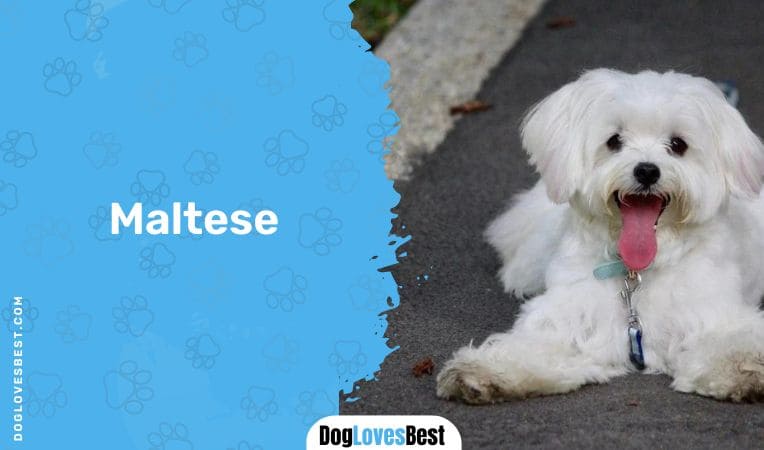
Maltese dog breed also possesses a dense coat that is not very favorable for swimming. Playing with them and indulging in activities, in dry zones is the safest bet for this dog breed.
5. Pug
Pugs are not swimmers at all. The best you can do is get him a kiddie or a doggy pool where they can swim in shallow waters. Firstly, they have a narrow muzzle and a flat face.
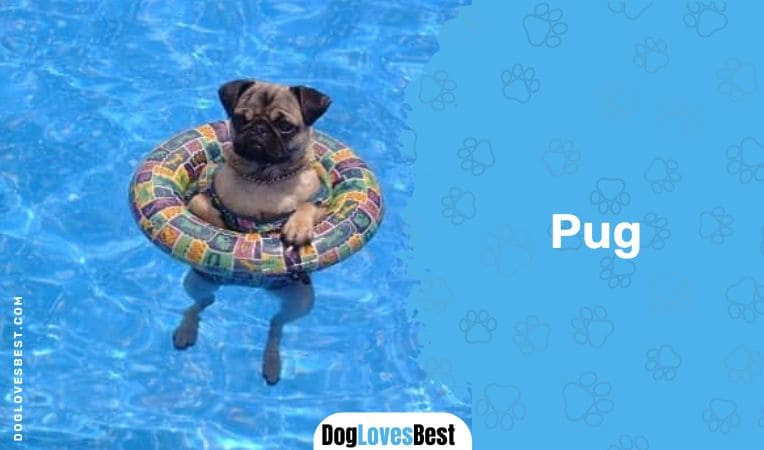
A common dilemma for dogs who possess this structure is that they have to struggle to get their necks out of the water. Moreover, pugs are short meaning they have to struggle a lot to push themselves out of the water.
If at all, they attempt to, they have to place themselves in such a way that their back tucks under their whole body. This causes them to take an almost upright position in the water, causing high chances of sinking.
Therefore, it is very difficult for these creatures, for which it is better when they are cuter, away from the water.
6. Shih Tzu
Nobody can beat their cuteness, but when it comes to swimming, it is an absolute no-no for the Shih Tzu. This dog breed is so sensitive, they are prone to chills even with the slightest change in their environment or staying in contact with water for too long.
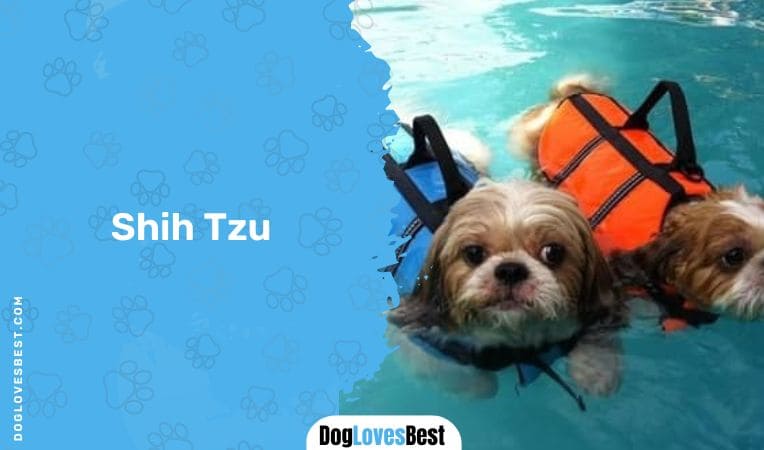
About their body frame; they have short legs and a tiny muzzle which neither gives them a good height nor does it allow them to breathe easily. They are very fluffy and hairy, which automatically leads to weighing them down while swimming.
They have hair falling almost throughout their face. This definitely makes them look snuggly and cute but poses as a disadvantage while swimming. Also, their small size is not very suitable for big pools, as they may start feeling nervous and scared while swimming.
7. Basset Hound
Basset Hounds are a dog breed known to have long, droopy ears and an overall long droopy face. They possess a rigid bone stature but then again have short legs. This makes them look very disproportionate.

When it comes to their swimming skills, their muzzle and snout may not cause a problem, provided their short legs let them reach the water surface for breathing.
Additionally, their long floppy ears are an issue because they are highly susceptible to ear infections if in contact with water for a long time. Therefore, it is safe to keep them away from water or swimming pools.
8. Staffordshire Bull Terrier
Playing with this dog breed in water is definitely not possible. Unlike other breeds, they do not have a dense coat to weigh them down but rather, a very disproportionate weight distribution and face structure. Their face is too wide, and their barrel chest and overall body structure is too broad.

They have a high body mass which makes them heavy. This makes them sink, and it is difficult for them to keep their head above the water for a long time.
With this body shape and structure, it is difficult for them to breathe or even reach the water surface to catch some breath. Thus, swimming pools are no good for them.
9. Boxer
These dog breeds are long-legged and have a good height, but the only problem is their flat face and short muzzle. Hence, they need to be kept under careful supervision when taken for a swim.
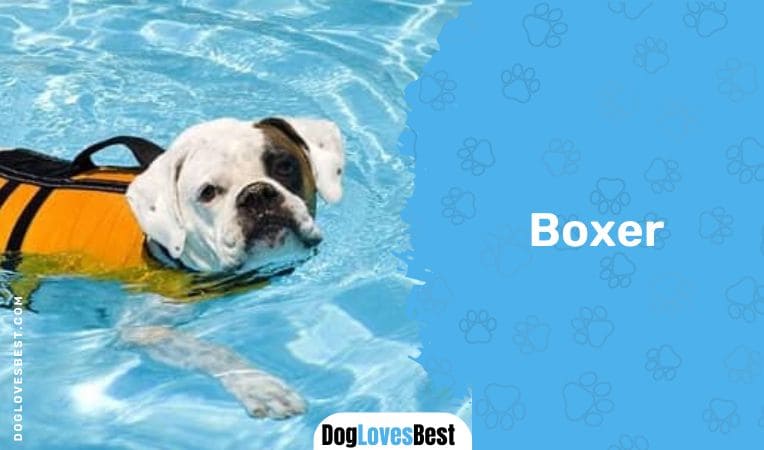
Although it is advisable they do not stay in the pool for a long time, they can be taken for a dip occasionally to kiddie pools or shallow water areas.
Having a dog vest would prevent them from drowning. These breeds can prefer staying on the shore and not explore deep into the waters.
10. Dachshund
Daschunds have a long neck and a long, tapered body with a long snout, except for the fact, that they have long legs. A long tapered body is very conducive for swimming and a long snout with a big muzzle causes ease in breathing.
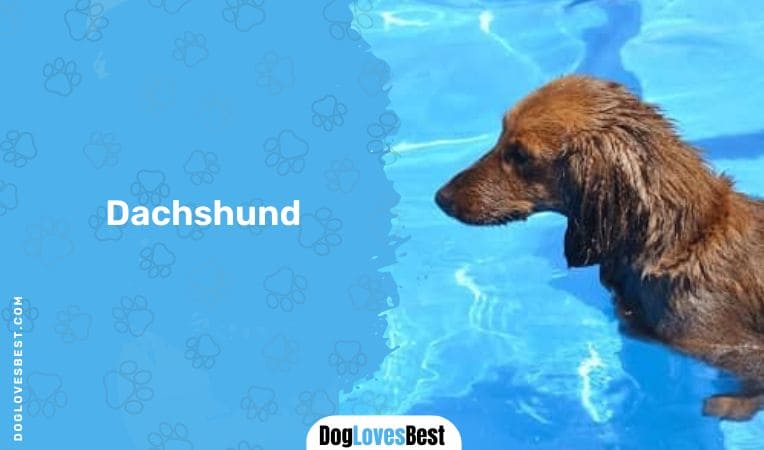
But Daschund’s are extensively short, which in no way, would let them reach the water surface. Daschunds can paddle for a while, and keep flipping and flopping in the water, this would require careful supervision.
A life vest can keep them from drowning and safe, but as a Daschund dog owner, you have to be very careful about the level of water in which your dog takes a dip. Using a shower or sprinkler is advisable if at all, else a kiddie pool with water up to the shoulder level is advisable.
Final Note
Now that we know about the breeds who cannot swim, if you plan to pet a dog and consider swimming as a great pastime with your pet, then this article is a must-read for you.
Certain dog breeds can get really stressed about the idea of being exposed to water. This can be due to past experiences, traumas, or accidents which end up scaring your pet and develop a fear about swimming.
Try to understand your dog’s likes and dislikes towards a particular activity. When it comes to swimming, your dog may simply paddle in the water or may not respond at all. This can get dangerous as your dog may end up drowning.
Some dog breeds simply don’t like coming in contact with water, and may instinctively swim as a response to avoid water. Some breeds are scared to venture into a water body and dropping them into one, means trouble.
Even if your dog doesn’t enjoy swimming, it can simply come into the pool with you. You can choose to offer your dog, a life vest.
Getting to know about your pet’s breed and gathering all relevant information about them is great for knowing whether your dog is fit to venture into a swimming pool or any water body.
Not every dog is an expert. It all depends on how smartly they can sustain themselves in water and if trained, can learn to swim easily.
So if you are a caring and loving dog parent, and own any of these above-mentioned dog breeds, then this article is definitely informative to know of your doggy’s traits with regards to swimming and dealing with water.
Reference:
- The dos and donâts of dog water safety. (n.d.-d). VCA Hospitals. Retrieved August 25, 2022, from https://vcahospitals.com/shop/articles/the-dos-and-don-ts-of-dog-water-safety
- M. (2022b, July 22). Keep It Cool This Summer: Tips For Taking Dogs Swimming. VMBS News. Retrieved August 25, 2022, from https://vetmed.tamu.edu/news/pet-talk/taking-dogs-swimming/

Ellis is a retired veterinary technician and full-time contributor at DogLovesBest. He likes writing about pet health care tips and reviews the products that are useful for fidos on a daily basis.
Ellis also guardians a Siberian husky, Nova, and a cat named Shilly. They all live happily with his wife Ammy, and both the dogs on a seaside apartment in Queens, NY.
